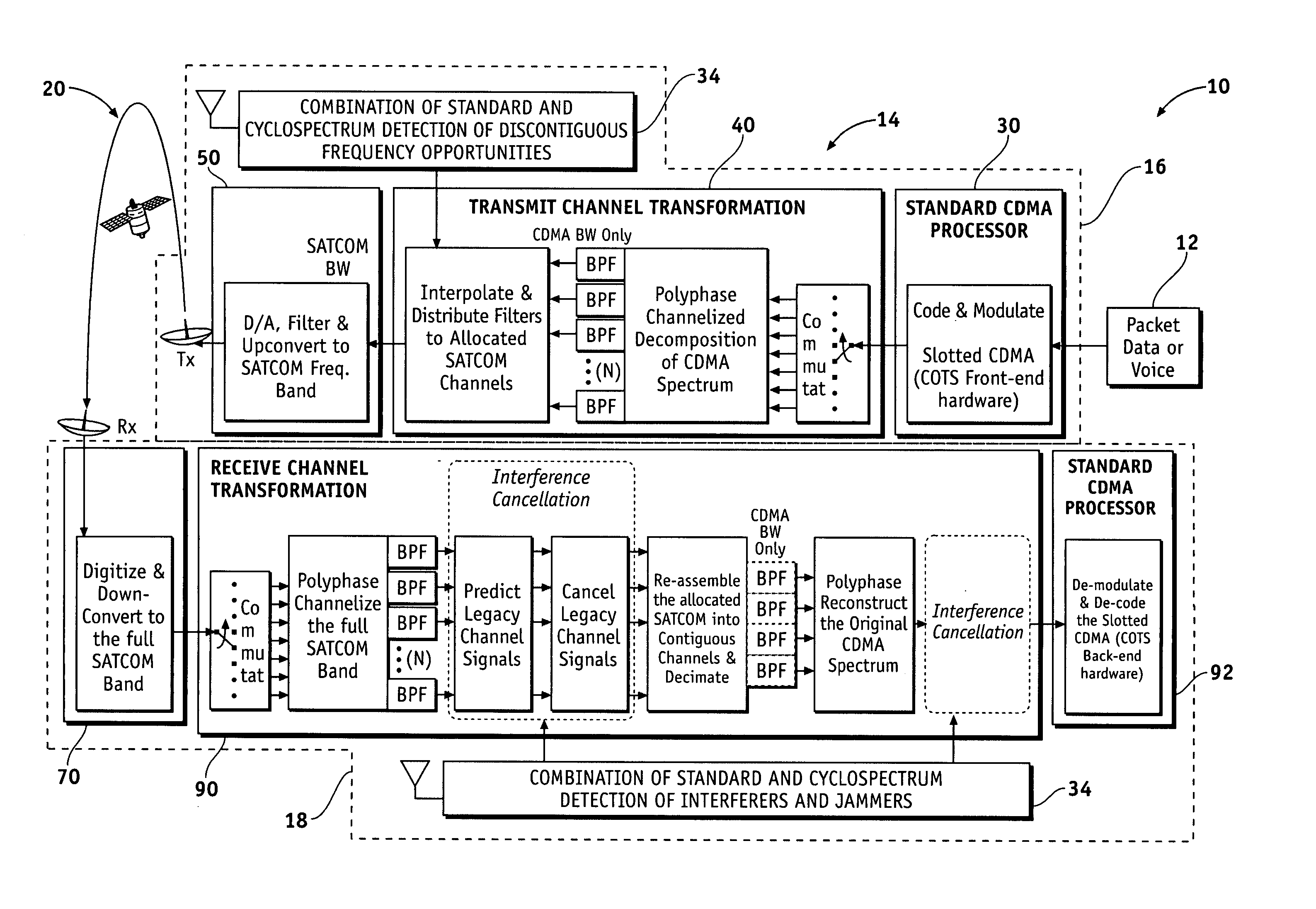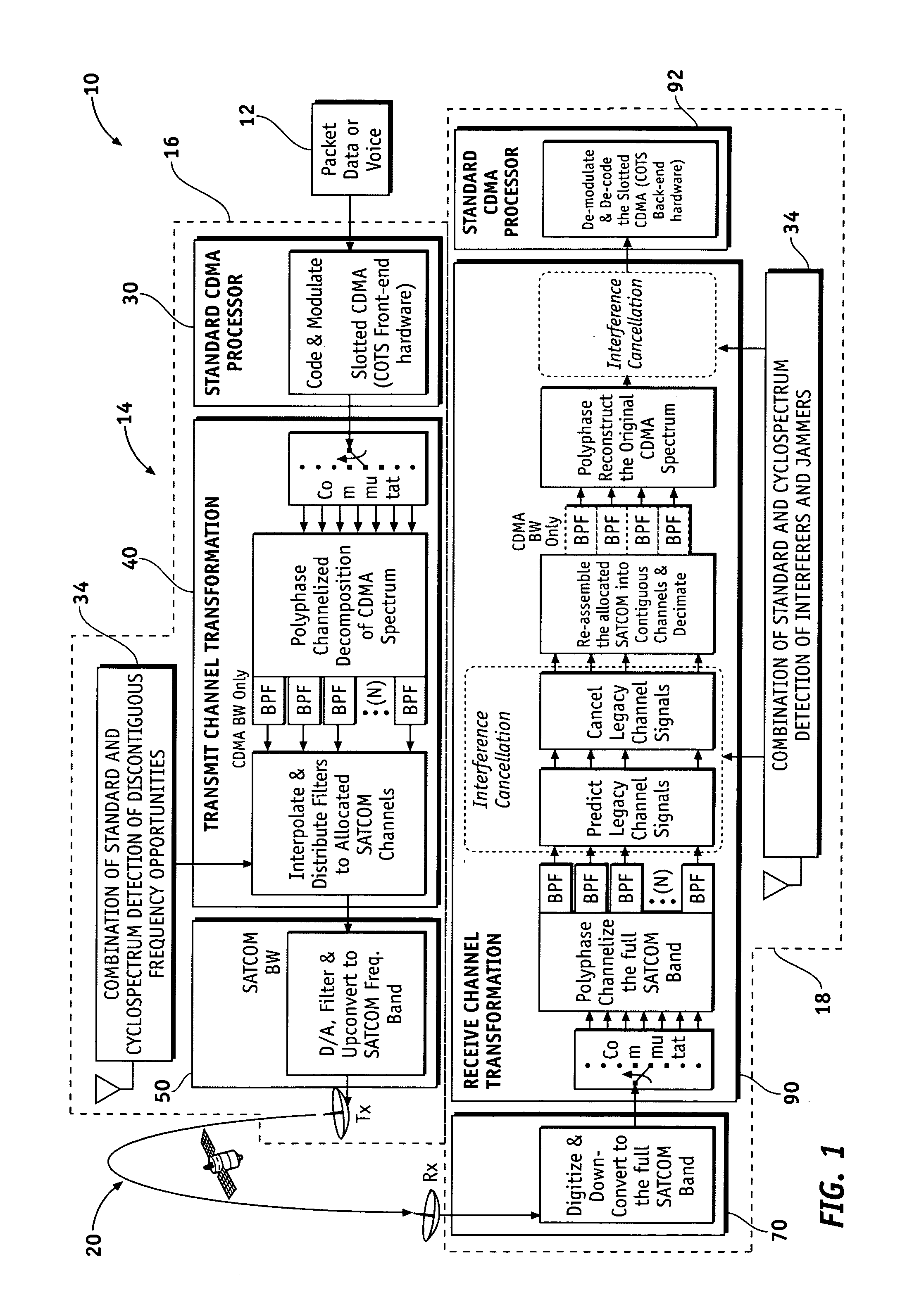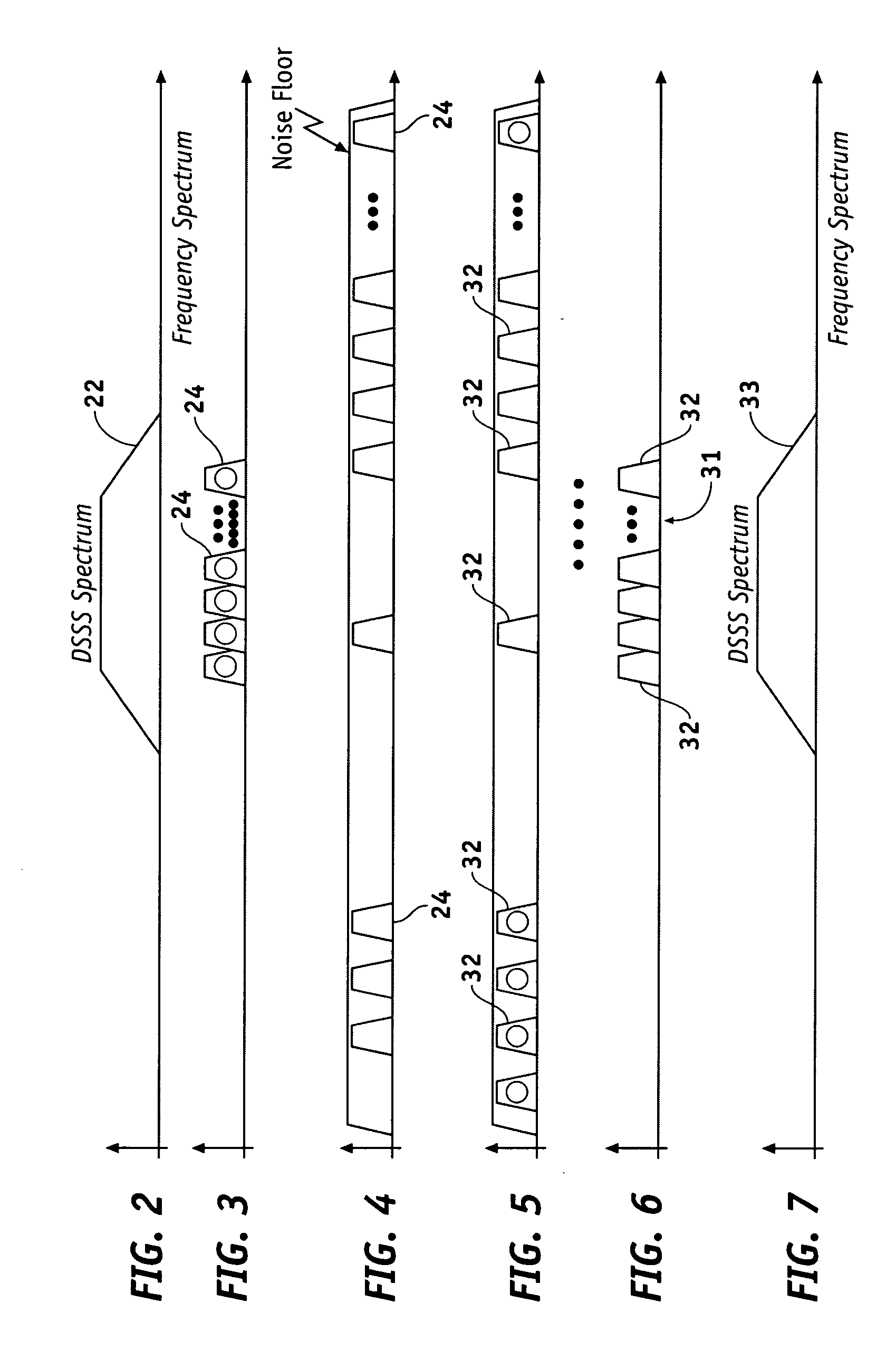Method and apparatus for signal separation
a signal separation and signal technology, applied in the field of spread spectrum communication, can solve the problems of co-channel interference between the transmitted cdma signals, the inability to achieve complete orthogonality in practice, and the degraded transmission quality of cdma signals in such systems
- Summary
- Abstract
- Description
- Claims
- Application Information
AI Technical Summary
Problems solved by technology
Method used
Image
Examples
Embodiment Construction
[0023] The following detailed description of the invention is merely exemplary in nature and is not intended to limit the invention or the application and uses of the invention. Furthermore, there is no intention to be bound by any theory presented in the preceding background of the invention or the following detailed description of the drawings.
[0024] Although a spread spectrum radio is described hereinafter with regard to corresponding hardware that accomplishes signal processing functions, the spread spectrum radio may alternatively utilize software, such as found in software defined radios, that encompass applications, routines, or other software modules to accomplish signal processing functions. Those of skill in the relevant art will appreciate that other variations of hardware, software, or any combination thereof may be implemented to accomplish the same functions such as programmable microprocessors or controllers. Additionally, although a radio and a communication system ...
PUM
 Login to View More
Login to View More Abstract
Description
Claims
Application Information
 Login to View More
Login to View More - R&D
- Intellectual Property
- Life Sciences
- Materials
- Tech Scout
- Unparalleled Data Quality
- Higher Quality Content
- 60% Fewer Hallucinations
Browse by: Latest US Patents, China's latest patents, Technical Efficacy Thesaurus, Application Domain, Technology Topic, Popular Technical Reports.
© 2025 PatSnap. All rights reserved.Legal|Privacy policy|Modern Slavery Act Transparency Statement|Sitemap|About US| Contact US: help@patsnap.com



